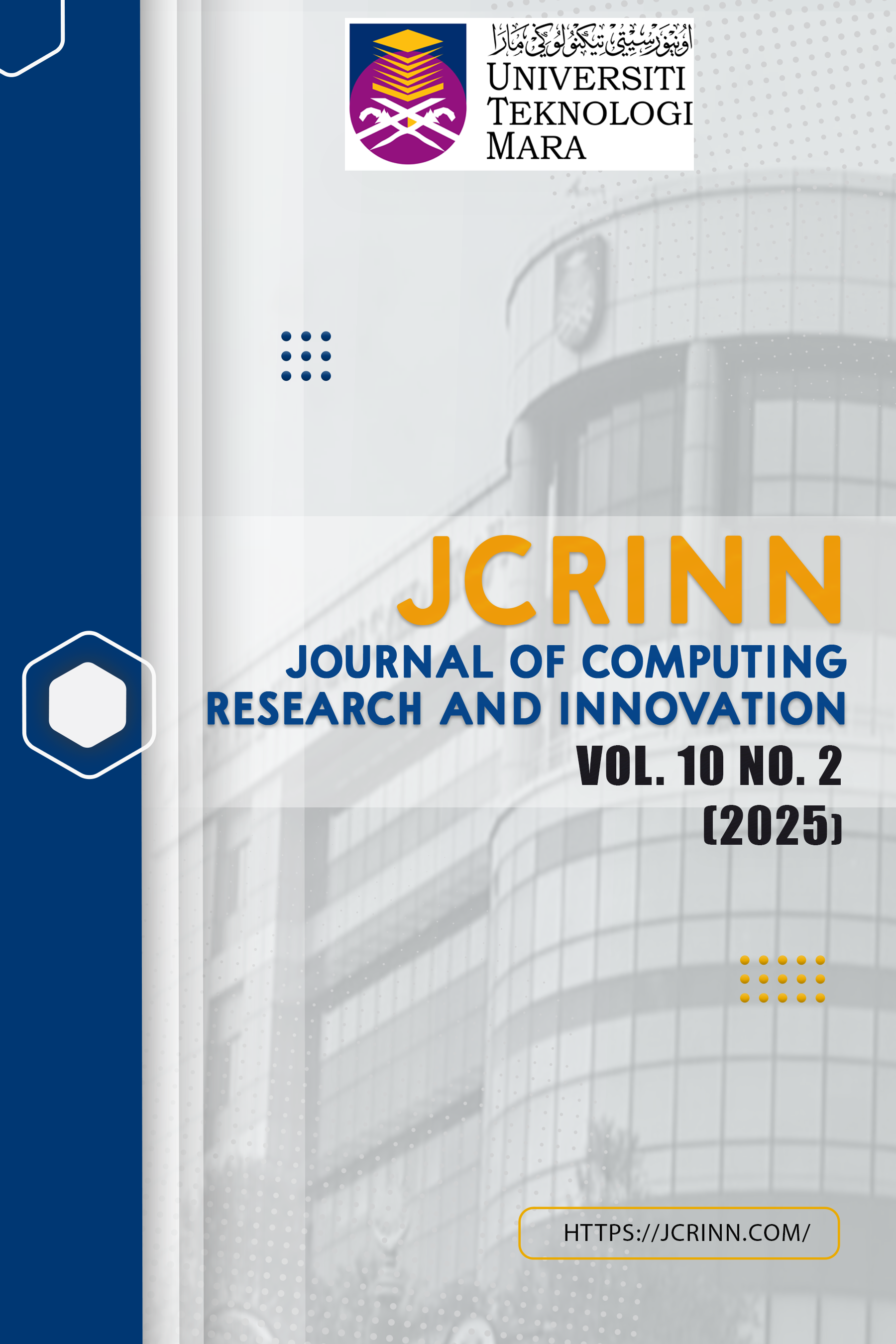Heart Failure Detection Using Scaled Conjugate Gradient Method and Naïve Bayes
DOI:
https://doi.org/10.24191/jcrinn.v10i2.544Keywords:
Heart Failure, Artificial Neural Network, Scaled Conjugate Gradient, Naïve BayesAbstract
Heart failure known as high mortality rates is a serious pathophysiological condition characterized and substantial long-term healthcare costs. Early detection is crucial, as the disease tends to progress without timely and appropriate intervention. This study aims to predict the risk of heart failure using structured clinical data and to leverage deep learning techniques to enhance the accuracy of risk assessment. The core objective is to demonstrate that early identification of heart failure indicators can significantly improve patient outcomes, potentially distinguishing between life and death. Recognizing these early warning signs provides a better opportunity for preventive care and timely treatment. To achieve this, two algorithms were employed: the Scaled Conjugate Gradient method within an Artificial Neural Network (ANN) framework, and the Naïve Bayes classifier. A Feed-Forward Neural Network (FFNN) was utilized as the primary classifier to detect the presence of heart failure. The neural network architecture used in this study consisted of 12 input neurons, 20 hidden layers, and a single output layer. The performance results revealed that the ANN achieved an accuracy of 86.7%, while the Naïve Bayes classifier reached an accuracy of 76.9%. Overall, the ANN demonstrated best performance in detecting heart failure, especially with a large number of hidden neurons, highlighting its potential as an effective diagnostic tool.
Downloads
References
Basim, A.H., Reem, M., Alaa, L.I. & Hawraz, N.J. (2025). Improved conjugate gradient methods for unconstrained minimization problems and training recurrent neural network. Engineering Reports, 7(2), 1-13. https://doi.org/10.1002/eng2.70019
Dangare, C. S. & Apte, S. S. (2012). Improved study of heart disease prediction system using data mining classification techniques. International Journal of Computer Application, 47(10), 44-48. https://doi.org/10.5120/7228-0076
Filippis, L. A. C. D., Serio, L. M., Facchini, F., & Mummolo, G. (2018). ANN modelling to optimize manufacturing process. Advanced Applications for Artificial Neural Networks, 11, 201-225. https://doi.org/10.5772/intechopen.71237
Girdonia, M., Garg, R., Jeyabashkharan, P., & Minu, M.S. (2019). Cervical cancer prediction using Naïve Bayes Classification. International Journal of Engineering and Advanced Technology (IJEAT), 8(4), 784-787.
IBM Cloud Education. (2020). What are neural networks?. IBM Cloud.
Luo, Y., Liu J., Zeng, J. & Pan, H. (2024). Global burden of cardiovascular diseases attributed to low physical activity: An analysis of 204 countries and territories between 1990 and 2019. American Journal of Preventive Cardiology, 17, 100633. https://doi.org/10.1016/j.ajpc.2024.100633
Malik, A., Brito, D., & Chhabra., L. (2025). Congestive heart failure. StatPearls. StatPearls Publishing. https://www.statpearls.com/point-of-care/search?q=Congestive+Heart+Failure
Merve, V., Erkan, V. & Ihsan, O.B. (2024). Performance comparison between Naïve Bayes and machine learning algorithms for news classification. Bayesian Inference – Recent Trends. 1-20. https://doi.org/10.5772/intechopen.1002778
Maad, M. M. (2021). Artificial neural network advantage and disadvantages. Mesopotamian Journal of Big Data, 2021, 29-31. https://doi.org/10.58496/MJBD/2021/006
Porumb, M., Iadanza, E., Massaro, S., & Pecchia, L. (2020). A convolutional neural network approach to detect congestive heart failure. Biomedical Signal Processing and Control, 55, 101597. https://doi.org/10.1016/j.bspc.2019.101597
Reddy, M.K., Helkkula, P., Keerthana, Y.M., Kaitue, K., Minkkinen, M., Tolppanen, H., Nieminen, T., & Alku, P. (2021). The automatic detection of heart failure using speech signals. Computer Speech and Language, 69, 101205. https://doi.org/10.1016/j.csl.2021.101205
Sajja, T. K. & Kalluri, H. K. (2020). A deep learning method for prediction of cardiovascular disease using Convolutional Neural Network. International Information and Engineering Technology Association (IIETA), 34(5), 601-606. https://doi.org/10.18280/ria.340510
Santos-Pereira, J., Gruenwald, L., & Bernardino, J. (2022). Top data mining tools for the healthcare industry. Journal of King Saud University - Computer and Information Sciences, 34(8), 4968-4982. https://doi.org/10.1016/j.jksuci.2021.06.002
Swaminathan, S., & Tantri, B. R. (2024). Confusion Matrix-Based Performance Evaluation Metrics. African Journal of Biomedical Research, 27(4S), 4023-4031. https://doi.org/10.53555/AJBR.v27i4S.4345
UCI Machine Learning Repository. (2025). Dataset. UC Irvine Machine Learning Repository. https://archive.ics.uci.edu/datasets
Vigen, R., Maddox, T.M. & Allen, L.A. (2012). Aging of the United States Population: Impact on Heart Failure. Current Heart Fail Reports, 9(4), 369–374. https://doi.org/10.1007/s11897-012-0114-8
Downloads
Published
Issue
Section
License
Copyright (c) 2025 Norpah Mahat, Norazwana Saidin @ Zubir, Jasmani Bidin, Mohamad Najib Mohamad Fadzil, Sharifah Fhahriyah Syed Abas, Siti Sarah Raseli (Author)

This work is licensed under a Creative Commons Attribution 4.0 International License.


